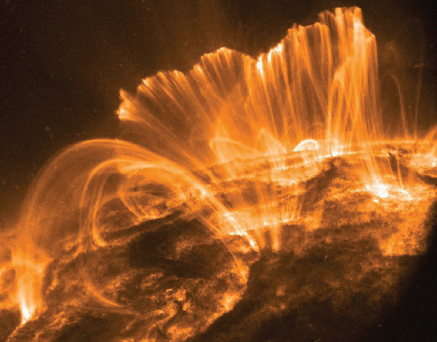Yes. Sunspot activity goes through a two-cycle pattern of high and low activity: one that lasts about 11 years (more accurately, about 10 years, six months), and also an 88-year cycle of highs and lows; and astronomers speculate an even longer pattern might be possible. The first person to observe sunspot cycles was German astronomer Heinrich Samuel Schwabe (1789–1875). Originally a pharmacist, Schwabe became an amateur and then professional astronomer. Wondering whether there was another planet besides Mercury and Venus close to the Sun, he accidentally discovered sunspots and became completely fascinated by them. From 1825 until near the end of his life, he observed the Sun daily, recording the number of sunspots he observed. From these observations, he noticed that there were periods of greater and lesser activity, which he thought came in cycles of about 10 years, a fairly close approximation, given the quality of telescopes at the time.

The Sun’s chromosphere is captured in this photo by Hinode’s Solar Optical Telescope in 2007. The Hinode mission is funded by the United States, Japan, the United Kingdom, and the European Space Agency. (JAXA/NASA)

